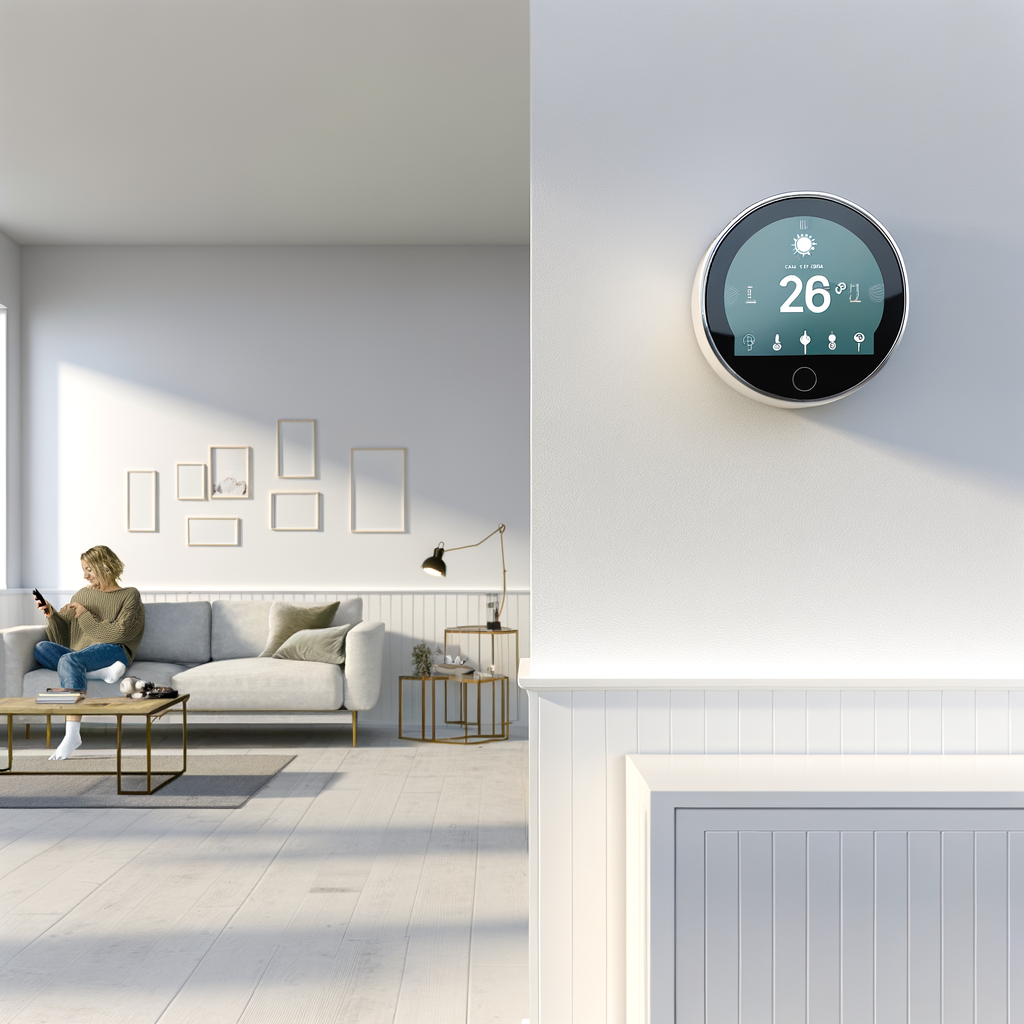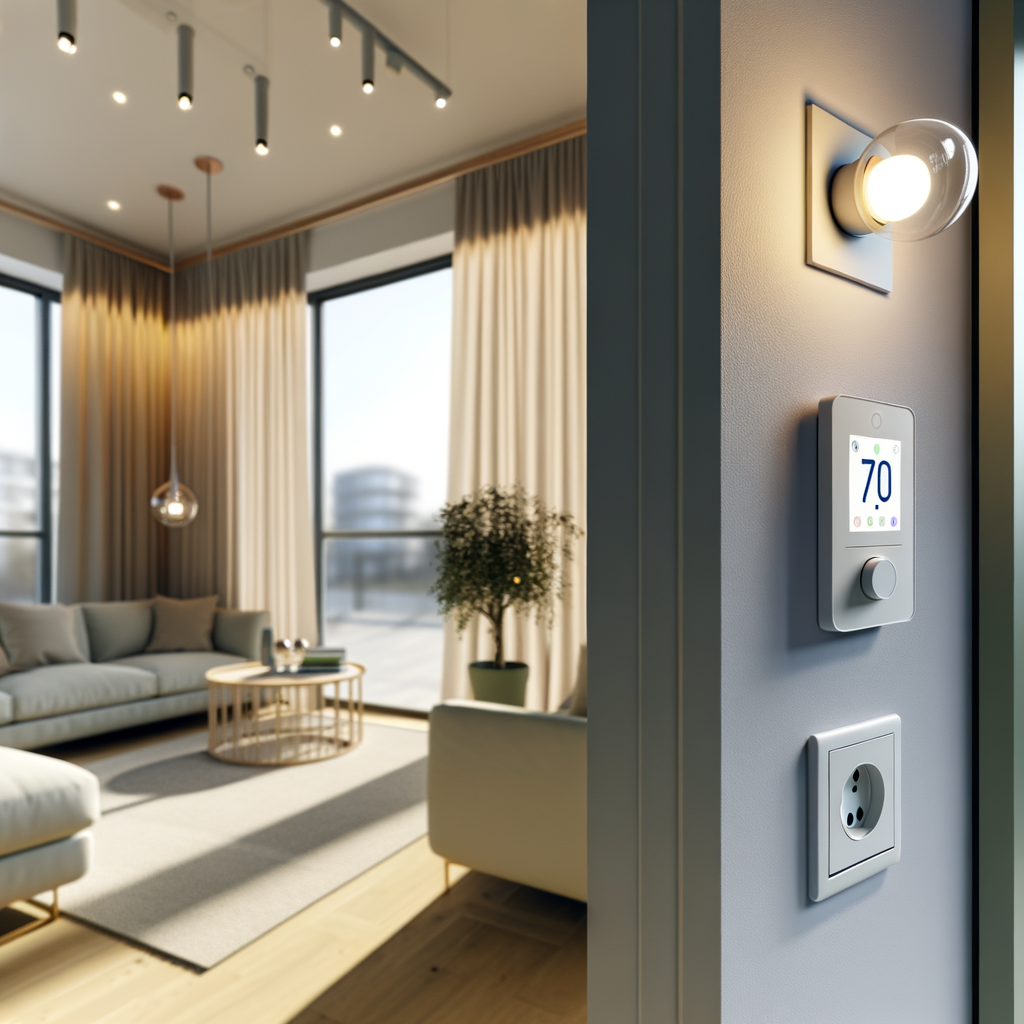Myth-Busting Smart Thermostats: Are They Really Worth It for Renters?
Thinking about getting a smart thermostat for your apartment? You’re not alone. As energy prices go up and technology gets smarter, many renters wonder if it’s worth investing in a smart thermostat—even if they don’t own their home. Unfortunately, there’s a lot of misinformation out there.
This complete guide will shed light on the most common myths surrounding smart thermostats for renters. You’ll learn how they actually work, if you’re allowed to install one in a rental, how much you could save, and what pitfalls to look out for. We’ll finish with practical tips and product recommendations so you can make an informed decision for your space.
What Is a Smart Thermostat?
Before we tackle the myths, it helps to understand what a smart thermostat actually does.
- Remote control: Adjust your apartment’s temperature anytime, anywhere, using your phone.
- Learning ability: Some models track your habits and adjust heating/cooling schedules automatically.
- Energy reporting: See detailed data on your energy usage.
- Compatibility: Many work with voice assistants like Alexa, Google Assistant, or Apple HomeKit.
Essentially, smart thermostats are designed to make managing your apartment’s temperature efficient and convenient—and ideally, save you money.
Myth #1: Renters Can’t Install Smart Thermostats
Debunked: In many cases, renters can install a smart thermostat, but it’s important to do a little homework first.
Check With Your Landlord
Most landlords want to protect their property, but many are supportive of energy-saving upgrades—especially reversible ones. Here’s what you should do:
- Ask for written permission. Clearly explain how the installation is non-destructive and offer to restore the original thermostat before moving out.
- Offer benefits. Point out that a smart thermostat may even add value or help the property run more efficiently.
- Share product data sheets. This reassures your landlord about the device’s safety and reversibility.
Choose a Reversible Model
The vast majority of standard thermostats can be swapped with a smart model—especially if you have a simple 2-wire or 4-wire system. When you move out, simply reinstall the original.
Tip: If you’re not allowed to make permanent electrical changes, consider “no-install” alternatives like portable smart thermostats or room sensors.
Myth #2: Smart Thermostats Won’t Save Renters Money
Debunked: Smart thermostats can absolutely reduce your utility bills. The savings potential depends on your lifestyle, the heater/AC setup, and your attention to settings—but renters often see real benefits.
How Smart Thermostats Save Money
- Automatic scheduling: Only heat or cool your space when you’re home.
- Geofencing: Uses your phone’s location to turn systems off when you leave and on before you get back.
- Learning features: Adjust to your daily patterns and minimize unnecessary run time.
- Data visibility: See wasted energy and adjust habits with easy-to-read reports.
Typical Savings
- EPA estimates: Smart thermostats save an average of 8-15% on heating and cooling costs.
- Real-world example: If your heating/cooling bills are $100/month, you could save $8-$15 monthly—or up to $180/year.
Actual results: Your savings will depend on how much control you had before making the switch. If you never bothered with schedules or were forgetful, savings will be higher. If you already had good habits with a programmable thermostat, savings will be more modest—but convenience may make them worthwhile.
Myth #3: Smart Thermostats Are Difficult or Risky to Install
Debunked: Smart thermostats are typically quite easy for DIYers to install—especially in apartments with standard gas forced air systems or electric baseboard heaters.
What You Need to Know Before Installation
- Know your system type: Forced air, heat pump, radiant heat, or electric baseboard. Most smart thermostats work with the first two. Electric baseboards may need special models.
- Check for a C-wire (common wire): Some smart thermostats require this to power the device. If you don’t have one, look for models designed to work without it (like certain Ecobee or Nest models), or use the provided workaround kits.
- Turn off the power. Always switch off HVAC power at the breaker box before removing your old thermostat to avoid shock.
- Take photos of wiring. Before removing wires, photograph everything for easy reinstallation later.
No Tools? No Problem
Many smart thermostats come with everything you need, but if you’re uncomfortable with wiring, consider:
- Asking your landlord: They may offer to handle the swap or recommend a local handyman.
- Hiring professional help: Inexpensive fixed-fee installation is available in many areas (often for under $100).
Myth #4: Smart Thermostats Won’t Work With My Apartment’s HVAC
Debunked: There’s a smart thermostat for nearly every system out there—but you do need to check compatibility.
Compatible Systems
- Central heating & air conditioning: Common in most apartments; smart thermostats work well.
- Heat pumps: Most leading brands (Nest, Ecobee) support these out of the box.
- Boilers (hydronic/radiator): Select smart thermostats are compatible with these low-voltage systems.
May Require Special Solutions
- Electric baseboard heat: Needs high-voltage (line voltage) compatible models, such as Mysa or Stelpro.
- Multiple zones: Each zone may need its own thermostat. Some models support multi-zone setups via remote sensors or additional units.
- Window or ductless ACs: These generally don’t use wall thermostats, but you may still gain “smart” control using compatible smart plugs or standalone AC controllers.
Myth #5: Smart Thermostats Only Make Sense for Homeowners
Debunked: Smart thermostats can be an excellent investment for renters, especially if you:
- Pay your own gas or electric bill
- Plan to stay in the same rental for 1 year or longer
- Want tech-savvy convenience (e.g., voice commands, remote access)
Since smart thermostats are easy to remove, you can uninstall the unit and re-use it if you move to another apartment or house later on.
Upsides for Renters
- Lower monthly bills that put money back in your pocket
- Improved comfort thanks to more precise scheduling and temperature control
- Manage energy usage from your phone or with your voice
- Easy removal with no trace when it’s time to move out
Myth #6: All Smart Thermostats Are Basically the Same
Debunked: There’s a huge range in features, compatibility, and ease of use among smart thermostats. Picking the right model is key for renters.
Important Features for Renters
- No-hassle installation: Especially critical for reversible setups.
- App compatibility: iOS, Android, and platform integrations with smart home systems.
- C-wire free operation: Ideal for older apartments without common wire.
- Energy use insights: Look for intuitive reporting and energy-saving suggestions.
- Portability: Easy to remove and take with you when you move.




